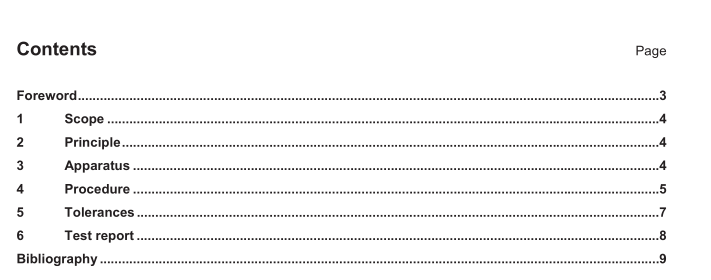EN 15384:2007 – Packaging – Flexible aluminium tubes – Test method to determine the porosity of the internal coating

1 Scope
This standard is applicable for internally coated aluminium tubes, mainly used for the packing of pharmaceutical, cosmetic, hygiene, food or other household products. The internal coating is used as a barrier and should avoid any contact between aluminium and the product.
This standard defines two alternative methods – copper sulphate and sodium chloride method – to detect the electrolyte conductivity as one criterion for the quality of the internal coating.
NOTE The electrolyte conductivity of the internal coating is only one criterion for evaluation of the quality of an internal coating.
It does not give any information on the quantity or size of any pores or uncoated areas, nor any hint on possible reactions between the aluminium tube and the product. The electrolyte conductivity should never be used as the sole criterion for quality evaluation of the internal coating, but always with other parameters e.g. film thickness, acetone and/or ammonia resistance and of course results of enhanced stability studies.
2 Principle
The electrolyte conductivity of internally coated aluminium tubes is tested by an enamel conductometer. The aluminium tubes are filled with an electrolyte solution up to a fixed level at its open end. One electrode is connected to the tube nozzle, the second electrode is dipped into the solution.
A defined voltage is applied for a fixed time. The induced current is a measure for the quality (pores and/or film thickness) of the internal coating. NOTE In the early 80´s the copper sulphate method was developed and standardized (e.g. DIN 55436-3 [1]). Subsequently this method became a nationally and internationally well accepted quality criterion for the internal coating of metal tubes and cans.
In the past few years a new method, the sodium chloride method, came into being, holding several advantages concerning accuracy, reproducibility and repeatability as well as on health and environmental aspects. As the changeover from the copper sulphate to the sodium chloride method will require a transitional period, this standard describes both methods. It is planned to delete the copper sulphate method as a national and/or international standard in the next revision of this document.
3 Apparatus
Enamel conductometer
Moveable electrode
Electrolyte
A schematic diagram of the test equipment is given in Figure 1.
https://www.freestandardsdocuments.com/wp-content/uploads/2023/03/EN-15384.png